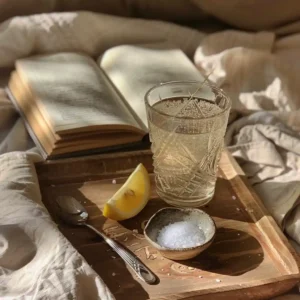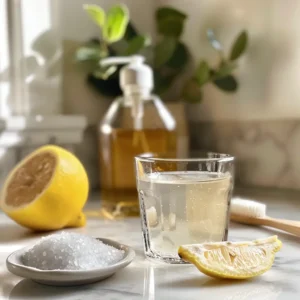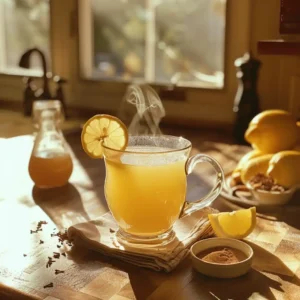I still remember the first time I tried making a homemade electrolyte drink. I was training for a summer hike in Arizona and regular sports drinks just made me feel more sluggish—too sweet, too artificial. That’s when I stumbled across an old note I had written with a recipe called “nature’s Gatorade.” It was something Bryce Harper once mentioned in an interview, and it got me curious. What started as a little experiment in my kitchen turned into a regular habit—and a total game changer for hydration.
In this guide, I’m going to walk you through a natural Gatorade recipe you can make at home. Whether you’re a fitness enthusiast, an outdoor adventurer, or just trying to stay better hydrated throughout the day, this article is for you. You’ll learn:
- What makes a good homemade electrolyte drink
- Which natural ingredients mimic Gatorade without the artificial additives
- The health benefits of switching to a natural alternative
- Step-by-step instructions for making your own
- Pro tips for customizing your drink for taste, performance, and recovery
Natural hydration shouldn’t be complicated, expensive, or full of synthetic dyes. With this recipe and guide, you’ll be able to fuel your body the way nature intended.
Looking for inspiration? Try this adrenal cocktail recipe that’s great for supporting your body’s hydration and energy needs.
Let’s jump into Part 1 and break down what Gatorade is made of—and how we can recreate its benefits at home using real ingredients.
Understanding What’s Really in Gatorade
What is Gatorade and why do people use it?
Gatorade was originally designed for athletes to help replace electrolytes lost through sweat. It contains sodium, potassium, sugar, and water—ingredients that support hydration and energy. But store-bought versions often include artificial colors, preservatives, and high-fructose corn syrup. If you’ve ever flipped the bottle over and squinted at the label, you know it’s not exactly “clean.”
That’s why more people are turning to a natural Gatorade recipe. It’s a healthier way to stay hydrated without synthetic additives. Instead of loading up on processed sugar and lab-made flavors, this version relies on real fruit juice, sea salt, and natural sweeteners like honey or maple syrup. The goal is to restore what your body loses during workouts, heat, or illness—just with better ingredients.
Why choose a natural Gatorade recipe over commercial drinks?
Commercial sports drinks may do the job in emergencies, but they aren’t ideal for regular use. Many contain food dyes and chemical preservatives that some people prefer to avoid. A natural Gatorade recipe, on the other hand, offers the same electrolyte support while being gentler on your body and your stomach. It’s also easy to tweak to your taste and health needs. For instance, you can skip the sweetener altogether or use coconut water for extra potassium.
Pro Tip: Always keep a small container of sea salt or Himalayan salt in your pantry. Just a pinch in your homemade Gatorade can help your body retain hydration more effectively—especially after intense activity or sweating.
Check out our fermented probiotic lemonade guide for another way to replenish hydration with a naturally fizzy twist.
Print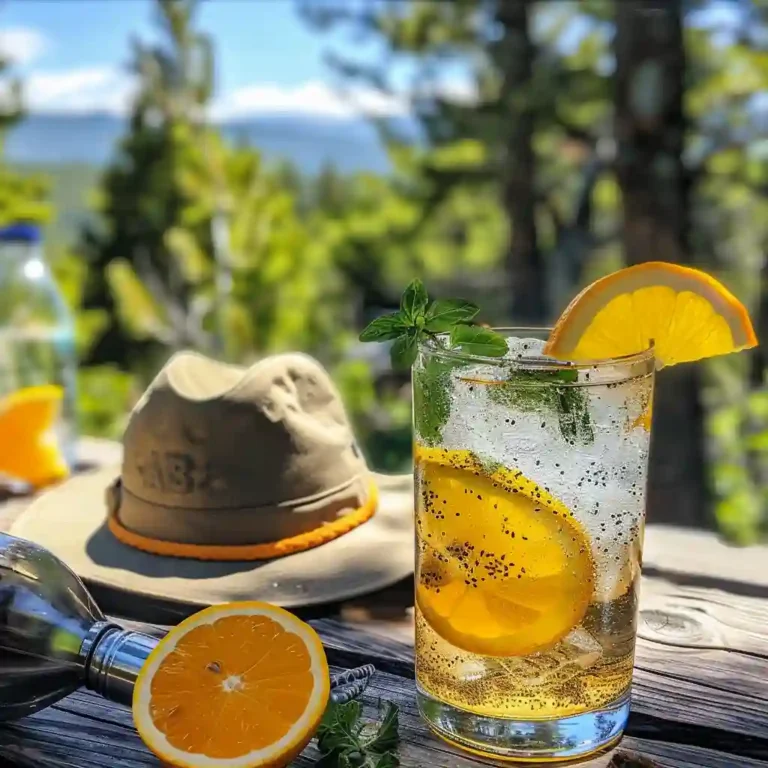
Natural Gatorade Recipe
A refreshing, all-natural electrolyte drink using coconut water, citrus, and real ingredients—perfect for workouts, hot days, or hydration recovery.
- Total Time: 5 minutes
- Yield: 2 servings 1x
Ingredients
- 2 cups coconut water (or filtered water)
- 1/2 cup freshly squeezed orange juice
- 2 tablespoons lemon juice
- 1/8 teaspoon sea salt or pink Himalayan salt
- 1 tablespoon raw honey or maple syrup
- Optional: a few basil or mint leaves, chia seeds, or a pinch of magnesium powder
Instructions
- Combine all ingredients in a jar or blender.
- Stir or shake well until the salt and honey are fully dissolved.
- Chill and enjoy, or pour over ice for a refreshing boost.
- Customize with lime, cucumber, or additional coconut water as needed.
- Store in the fridge for up to 2 days. Shake before each use.
Notes
Adjust salt and juice levels to suit your hydration and flavor needs. Great for post-exercise, illness recovery, or everyday hydration.
- Prep Time: 5 minutes
- Cook Time: 0 minutes
- Category: Drinks
- Method: No-Cook
- Cuisine: Health & Wellness
Nutrition
- Serving Size: 1 glass
- Calories: 80
- Sugar: 8g
- Sodium: 150mg
- Fat: 0g
- Saturated Fat: 0g
- Unsaturated Fat: 0g
- Trans Fat: 0g
- Carbohydrates: 10g
- Fiber: 0g
- Protein: 0g
- Cholesterol: 0mg
The Core Ingredients in a Natural Gatorade Recipe
Key electrolytes your body needs
When you sweat, your body loses important electrolytes—mainly sodium, potassium, magnesium, and calcium. These minerals help regulate muscle function, hydration levels, and energy. A well-balanced natural Gatorade recipe should aim to replace these without relying on synthetic sources. That’s why we turn to ingredients like coconut water, sea salt, and citrus juice.
Coconut water is a fan favorite for natural hydration because it’s packed with potassium and a bit of natural sugar. Sea salt or pink Himalayan salt adds sodium and trace minerals. Fresh lemon or lime juice delivers not just flavor, but also vitamin C and natural acids that may support digestion.
Natural sweeteners and flavor boosters
One of the biggest advantages of using a natural Gatorade recipe is that you control the sweetness. You can use raw honey, maple syrup, or even a splash of fruit juice like orange or pineapple. These options not only improve taste, but also provide energy and nutrients. Skip the artificial sweeteners—they may confuse your metabolism and leave a chemical aftertaste.
For a flavor boost, consider adding herbs like mint or basil, or even a slice of cucumber for a spa-style twist. A few chia seeds can also be added to thicken the drink slightly and add fiber. These little additions make a basic electrolyte drink feel more refreshing and satisfying.
Pro Tip: Keep frozen lemon juice cubes in your freezer. It’s an easy way to add citrus to your natural Gatorade recipe without peeling or squeezing every time.
Don’t miss our chia seed water recipe if you want a powerful hydration drink that also keeps you feeling full longer.
How to Make a Natural Gatorade Recipe at Home
Step-by-step instructions
Making your own natural Gatorade recipe at home is surprisingly quick and affordable. You only need a few ingredients, and it takes less than 5 minutes to mix up. Here’s a basic formula I use often:
Ingredients:
- 2 cups coconut water (or filtered water)
- 1/2 cup freshly squeezed orange juice
- 2 tablespoons lemon juice
- 1/8 teaspoon sea salt or pink Himalayan salt
- 1 tablespoon raw honey or maple syrup
- Optional: a few basil or mint leaves, chia seeds, or a pinch of magnesium powder
Instructions:
- Combine all ingredients in a jar or blender.
- Stir or shake well until the salt and honey are fully dissolved.
- Chill and enjoy, or pour over ice for a refreshing boost.
This homemade natural Gatorade recipe is easily customizable. You can adjust the juice ratio, use lime instead of lemon, or experiment with flavors like pomegranate or cucumber. The goal is to find the taste and electrolyte balance that fits your body best.
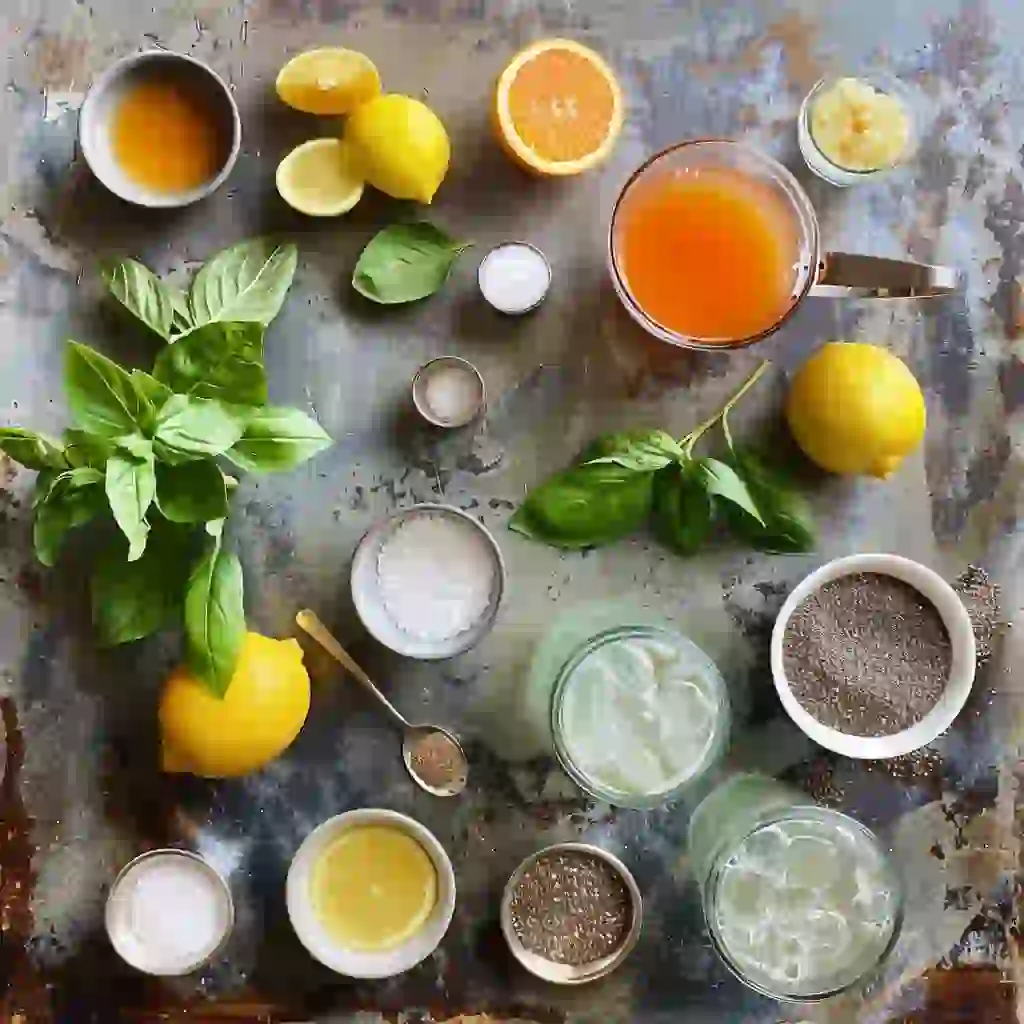
Adjusting for different needs
If you’re dealing with high heat, intense exercise, or even mild dehydration from illness, you may need more sodium or potassium. Just add a little more sea salt or swap in coconut water for its extra minerals. For kids or anyone sensitive to strong flavors, dilute with extra water and skip the salt entirely.
Pro Tip: Store your drink in a mason jar with a lid and keep it chilled in the fridge for up to 2 days. Shake before each use to keep the ingredients evenly distributed.
Don’t miss our berry basil detox drink for another creative way to hydrate with flavor and natural ingredients.
Health Benefits of a Natural Gatorade Recipe
Supporting hydration the natural way
One of the biggest perks of a natural Gatorade recipe is the cleaner hydration experience it offers. You’re not just refueling your body—you’re doing it without artificial colors, preservatives, or high-fructose corn syrup. Many people, including myself, notice a lighter, more refreshed feeling after drinking this homemade option, especially during hot days or long workouts.
Since this version uses real fruit juice, natural salts, and mineral-rich ingredients, it can support your body’s natural hydration response. It may help with energy dips, post-workout recovery, and even that sluggish feeling from sitting in air conditioning all day. Coconut water, for instance, is naturally rich in potassium—a mineral many of us don’t get enough of.
Why clean hydration matters for overall wellness
Unlike commercial sports drinks that often spike your blood sugar, a natural Gatorade recipe offers a steady, nourishing boost. This matters not just for athletes, but for anyone looking to avoid added sugar or chemical overload. The clean ingredients help your body do what it already knows how to do: stay hydrated, balanced, and functioning well.
It’s a smart choice for people with sensitive stomachs or kids who need hydration without the sugar crash. Plus, it tastes better because it’s made fresh, without that “bottled” aftertaste.
Pro Tip: Try making your natural Gatorade recipe the night before a hike or workout. Letting it chill overnight enhances the flavor, and you’ll have it ready to grab and go.
Looking for something even more probiotic? Check out this fermented lemonade guide that also supports gut health while keeping you refreshed.
Comparing a Natural Gatorade Recipe to Store-Bought Options
Natural vs. commercial: what’s the difference?
Let’s break down what really sets a natural Gatorade recipe apart from popular commercial sports drinks. First off, the ingredients list. A homemade version typically includes citrus juice, sea salt, and a touch of natural sweetener. Store-bought options? They often contain food dyes, synthetic preservatives, and refined sugars. That’s a huge difference if you care about what you’re putting into your body.
Most bottled sports drinks use artificial flavors and ingredients to mimic real fruit. A natural Gatorade recipe, by contrast, uses actual lemon, lime, or orange juice. That means you’re also getting natural enzymes, vitamin C, and phytonutrients—not just empty sweetness.
Cost and customization
Believe it or not, making your own electrolyte drink is cheaper over time. With a few pantry staples, you can make several servings for the price of one single bottle of Gatorade. Plus, you can fine-tune your recipe based on taste, dietary needs, or even weather conditions. Need more potassium? Add extra coconut water. Watching sugar intake? Use less juice or skip the sweetener altogether.
When you make a natural Gatorade recipe, you’re in control—and that control can translate to better performance and fewer post-workout crashes.
Pro Tip: If you crave fizz, add a splash of naturally carbonated water. It gives your drink that satisfying texture without processed ingredients.
Don’t miss our lemon and olive oil morning drink—a great way to wake up your system naturally and support hydration before you even start your day.

When to Drink a Natural Gatorade Recipe
Best times to rehydrate with homemade electrolytes
Timing matters when it comes to hydration. A natural Gatorade recipe is especially helpful before, during, or after physical activity. If you’re heading out for a run, hike, or long gym session, sipping a homemade electrolyte drink 30 minutes beforehand can prepare your body to sweat more efficiently. It also helps maintain better energy levels without the crash that often comes from sugary store-bought drinks.
You can also enjoy your natural Gatorade recipe on hot days, during illness, or anytime you feel depleted. I like to keep a batch ready in the fridge during the summer months, especially when I’m spending a lot of time outdoors or working in the garden. It’s also a great choice during travel when your hydration levels can easily dip from dry air or long flights.
Great for the whole family
Unlike commercial drinks with chemical additives, a natural Gatorade recipe is safe and refreshing for everyone—from toddlers to seniors. You can make a kid-friendly version by cutting back on citrus or using milder juices like watermelon or cucumber. For adults, it’s a smarter option after a night out or during recovery from mild dehydration caused by heat, sickness, or stress.
Pro Tip: Keep single-serving jars of your natural Gatorade recipe in the fridge. They’re perfect for grab-and-go hydration, especially when you’re short on time.
Check out this kefir soda for another fun and fizzy hydration option that also brings in some beneficial probiotics.
Variations of the Natural Gatorade Recipe for Different Needs
Adjusting flavors and ingredients based on your lifestyle
One of the biggest benefits of using a natural Gatorade recipe is how easy it is to adapt it for different situations. Everyone’s body is unique, and your hydration needs can change depending on activity, age, or even season. For instance, if you’re sweating heavily or training hard, you might want to increase the sodium by adding a touch more sea salt or include magnesium-rich ingredients like a pinch of magnesium citrate.
For kids or picky eaters, keep it light and fruity. Watermelon juice mixed with a little lime and salt creates a refreshing and fun version that’s mild but still effective. I’ve even added fresh strawberries or raspberries for a naturally sweet twist.
If you’re looking for a low-sugar option, try using cucumber juice, lemon, and just a drop of stevia. It gives you the electrolyte benefits without spiking your blood sugar—great for people watching their carbs or managing insulin levels.
Seasonal inspiration for your recipe
During the winter, I enjoy a warmer version of my natural Gatorade recipe by using warm water, fresh ginger, lemon, and a pinch of salt. It feels soothing and still replenishes lost minerals—perfect after indoor workouts or sauna sessions.
In the summer, icy blends with pineapple juice, mint, and coconut water are ideal. They hydrate fast and feel like a treat.
Pro Tip: Prep flavored ice cubes using your favorite variation of a natural Gatorade recipe. Add them to plain water later for a subtle, mineral-rich hydration boost.
Check out our berry basil detox drink if you’re in the mood for something vibrant, cooling, and deeply refreshing.
Storing and Transporting Your Natural Gatorade Recipe
How to store your homemade electrolyte drink
Once you’ve mixed your natural Gatorade recipe, you’ll want to store it properly to keep it fresh and safe to drink. Since this version doesn’t have preservatives like the store-bought kinds, it’s best to keep it in the fridge in a tightly sealed glass jar or bottle. I usually use mason jars or flip-top bottles with rubber seals.
It’ll stay good for up to 48 hours, though I recommend giving it a quick shake before each use since the ingredients can separate naturally. If you’ve added chia seeds, the texture will thicken slightly over time—some people love that, others may want to strain them out before drinking.
Tips for taking it on the go
Bringing your natural Gatorade recipe with you is simple and way more satisfying than grabbing a plastic bottle full of additives. For hikes or long commutes, pour it into a stainless steel bottle to keep it cold and avoid leaching from plastic containers. Add a few frozen citrus slices to act as both ice and flavor enhancers.
If you’re prepping for a full week, consider freezing single portions in silicone molds or small bottles. That way, they’re ready to go, and you avoid waste.
Pro Tip: Label your jars with the mix date so you always know how fresh your natural Gatorade recipe is. Freshness means better taste and maximum nutritional benefit.
Don’t miss our adrenal cocktail recipe, which is another great option for morning hydration and natural energy support.

Common Mistakes to Avoid When Making a Natural Gatorade Recipe
Skipping the salt
One of the most common mistakes I see when people try a natural Gatorade recipe for the first time is forgetting the salt—or not adding enough. While it might seem like a small detail, the salt is essential. Sodium is one of the primary electrolytes lost in sweat, and without it, you’re basically just drinking flavored water. Just a small pinch of sea salt or pink Himalayan salt can make a big difference in hydration.
Using too much sweetener
Another issue is going overboard with honey, maple syrup, or juice. Yes, these are better than processed sugars, but too much can turn your healthy drink into a sugar bomb. A good natural Gatorade recipe should taste slightly sweet but never syrupy. I always say: start light, taste it, and only add more if needed.
Not balancing the ingredients
Too much citrus can overpower the flavor, and too little can make the drink taste bland. Balance is key. Try to keep a good ratio between water, juice, salt, and sweetener. Think of your drink like a system—it works best when every part is in sync.
Storing it too long
Since this version has no preservatives, don’t expect it to last a week in the fridge. I once forgot a jar in the back for four days—it wasn’t pretty. Stick to making small batches and consume them within 48 hours for the best flavor and safety.
Pro Tip: If your natural Gatorade recipe tastes off, try adding a splash more lemon juice or a pinch of salt. These two small adjustments usually fix the balance right away.
Looking for more hydration inspiration? Check out this chia seed water recipe to explore other natural drink options that keep your body refreshed.
Frequently Asked Questions (FAQs)
How to make a natural Gatorade?
A natural Gatorade recipe starts with just a few real ingredients—coconut water or filtered water, fresh citrus juice like lemon or orange, a pinch of sea salt, and a natural sweetener such as honey or maple syrup. Mix everything well, chill it, and enjoy. It’s quick to make and easy to customize based on your preferences or needs.
How to create a homemade electrolyte drink?
Homemade electrolyte drinks like a natural Gatorade recipe are designed to replace key minerals lost through sweat—sodium, potassium, and magnesium. You can use ingredients like coconut water, citrus juice, and salt to mimic the effect of commercial sports drinks without the synthetic additives. Adding chia seeds or a splash of natural juice enhances the nutrient content and flavor.
What is a natural version of Gatorade?
A natural version skips all the artificial stuff—no dyes, preservatives, or refined sugars. A natural Gatorade recipe relies on real food-based ingredients to deliver hydration. Think citrus juice, sea salt, and coconut water. You’re getting electrolytes the way your body understands them—straight from nature, not a lab.
Is homemade Gatorade good for you?
Yes, when made correctly, a natural Gatorade recipe can be a healthy option. It supports hydration, helps replace lost minerals, and avoids added sugars and chemicals. It’s also easier on your stomach and more customizable. Just be mindful of ingredient quality and don’t overdo the sweeteners.
Pro Tip: Make your drink fresh daily, especially if you’re using perishable ingredients like fresh juice. It ensures the best taste and nutritional value every time.
Conclusion: Why a Natural Gatorade Recipe Belongs in Your Daily Routine
If you’ve ever reached for a sports drink and paused after reading the label, you’re not alone. Making your own natural Gatorade recipe gives you total control over what goes into your body. No artificial colors, no chemical preservatives—just simple ingredients that work with your body, not against it.
From gym sessions to outdoor adventures to daily hydration, this drink has earned a permanent spot in my fridge. It’s refreshing, functional, and endlessly adaptable to your lifestyle. You can scale the sweetness, tweak the salt, and explore new juice combos until it’s just right for you.
There’s something deeply satisfying about knowing exactly what’s in your glass. It turns an ordinary act—drinking water—into an intentional, nourishing habit. Whether you’re chasing performance goals or just trying to feel better throughout the day, a natural Gatorade recipe makes it easier to stay on track.
Pro Tip: Bookmark this article or jot down your favorite version of the recipe. Keep it visible in your kitchen to make staying hydrated second nature.
To explore more homemade wellness drinks, follow along on Facebook or get inspired by visual favorites on Pinterest.

